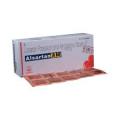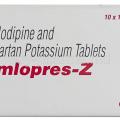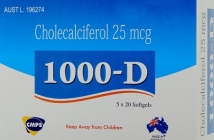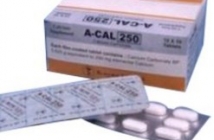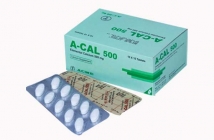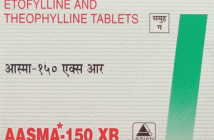Home / Categories / AMLOZAAR TAB.
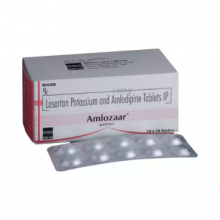
AMLOZAAR TAB.
(10X10)
AMLODIPINE-5MG
LOSARTAN-50MG
CALCIUM CHANNEL BLOCKERS & ANGIOTENSIN RECEPTOR BLOCKERS(ARBs)
MICRO LABS-CARSYON-2
Product Details
| Losartan Potassium |
| (low-SAHR-tan poe-TASS-ee-uhm) |
| Cozaar |
| Tablets: 25 mg |
| Tablets: 50 mg |
| Tablets: 100 mg |
| Class: Antihypertensive, Angiotensin II antagonist |
 Action Antagonizes the effect of angiotension II (vasoconstriction and aldosterone secretion) by blocking the angiotensin II receptor (AT1 receptor) in vascular smooth muscle and the adrenal gland, producing decreased BP.
Action Antagonizes the effect of angiotension II (vasoconstriction and aldosterone secretion) by blocking the angiotensin II receptor (AT1 receptor) in vascular smooth muscle and the adrenal gland, producing decreased BP.
Treatment of hypertension; nephropathy in type 2 diabetic patients.
 Contraindications Standard considerations.
Contraindications Standard considerations.
Hypertension
Adults: PO Initial dose: 50 mg once/day; 25 mg once/day if volume depleted or history of hepatic impairment. Maintenance: 25 to 100 mg/day.
Nephropathy in Type 2 Diabetes
Adults: PO Initial dose: 50 mg once daily; the dose may be increased to 100 mg once daily based on BP response.
Lithium
Plasma concentrations may be increased by losartan, resulting in an increase in the pharmacologic and adverse effects of lithium.
 Lab Test Interferences None well documented.
Lab Test Interferences None well documented.
CNS: Dizziness; insomnia. EENT: Nasal congestion. GI: Diarrhea; dyspepsia. RESPIRATORY: Cough; sinusitis. OTHER: Muscle cramps; myalgia; back pain; leg pain.
Pregnancy: Category D (second and third trimester); Category C (first trimester). Can cause injury or death to fetus if used during second or third trimester. Lactation: Undetermined. Children: Safety and efficacy in children younger than 18 yr not established. Renal function impairment: Use caution in treating patients whose renal function may depend on the activity of the renin-angiotension-aldosterone system (eg, patients with severe CHF). Hepatic function impairment: Losartan total plasma clearance is lower (50%) and total bioavailability is higher (2-fold) in patients with hepatic insufficiency as compared with healthy subjects. A lower initial dose is recommended for patients with a history of hepatic impairment. Hypotension/Volume-depleted patients: Symptomatic hypotension may occur after initiation of losartan in patients who are intravascularly volume depleted (eg, those treated with diuretics). Correct these conditions prior to administration of losartan or use a lower starting dose. African-Americans: Losartan may not be as effective in African-Americans.
| PATIENT CARE CONSIDERATIONS |
|
- Administer alone or in combination with other antihypertensives.
- Administer with caution and reduce dosage in patients with possible depletion of intravascular volume or a history of hepatic impairment.
- Can be administered with or without food.
- Do not administer to pregnant women as fetal and neonatal morbidity and death can occur.
- Safety has not been established for nursing infants and children.
- Store in tightly closed, light-resistant container at room temperature.
- Obtain patient history.
- Monitor BP and pulse. Should hypotension, tachycardia, or bradycardia result, withhold the medication and notify the health care provider.
- Monitor for signs of hypersensitivity including angioedema involving swelling of the face, lips, and tongue.
|
||||
- Instruct patient to take the medication as prescribed at the same time each day.
- Inform patient that losartan controls, but does not cure, hypertension.
- Caution patient to take the dose exactly as prescribed and not to stop taking the medication even if they feel better. Instruct patient not to decrease or increase the dosage.
- Instruct patient in BP and pulse measurement skills. Caution patient to call health care provider should abnormal measurements occur.
- Instruct patient in methods of fall prevention including rising slowly and sitting on the side of the bed before standing, especially early in therapy.
- Inform patient of the importance of adjunct therapies such as dietary planning, regular exercise program, weight reduction, low sodium diet, smoking cessation program, alcohol reduction, and stress management.
- Instruct patient to report symptoms of weakness, fatigue, dizziness, or lightheadedness to health care provider.
- Caution patient to notify health care provider or dentist prior to surgery or treatment.
- Caution women to contact health care provider if pregnant, planning to become pregnant, or breastfeeding.
AMLODIPINE
| (am-LOW-dih-PEEN) |
| Norvasc |
| Class: Calcium channel blocker |
 Action Inhibits movement of calcium ions across cell membrane in systemic and coronary vascular smooth muscle.
Action Inhibits movement of calcium ions across cell membrane in systemic and coronary vascular smooth muscle.
 Indications Hypertension; chronic stable angina; vasospastic (Prinzmetal's or variant) angina.
Indications Hypertension; chronic stable angina; vasospastic (Prinzmetal's or variant) angina.
 Contraindications Sick sinus syndrome; second- or third-degree atrioventricular (AV) block, except with a functioning pacemaker.
Contraindications Sick sinus syndrome; second- or third-degree atrioventricular (AV) block, except with a functioning pacemaker.
ADULTS: PO 5 to 10 mg qd. ELDERLY: PO Initially 2.5 mg qd.
HEPATIC IMPAIRMENT PO Initially 2.5 mg qd.
Beta-blockers: May cause increased adverse cardiac effects as a result of myocardial depression. Fentanyl: Severe hypotension or increased fluid volume requirements have occurred with similar drug.
 Lab Test Interferences None well documented.
Lab Test Interferences None well documented.
CV: Palpitations; peripheral edema; syncope; tachycardia; bradycardia; arrhythmias; ventricular asystoles. CNS: Headache; dizziness; lightheadedness; fatigue; lethargy; somnolence. DERM: Dermatitis; rash; pruritus; urticaria. GI: Nausea; abdominal discomfort; cramps; dyspepsia. RESP: Shortness of breath; dyspnea; wheezing. OTHER: Flushing; sexual difficulties; muscle cramps, pain or inflammation.
Pregnancy: Category C. Lactation: Undetermined. Children: Safety and efficacy not established. CHF: Cautious use is required with this condition. Hepatic impairment: Cautious use is required.
| PATIENT CARE CONSIDERATIONS |
|
- Administer medication in morning.
- If patient has difficulty swallowing, crush tablets.
- Store in tightly closed container in cool location.
- Obtain patient history, including drug history and any known allergies. Note any diabetes, liver disease, cardiac disease or sensitivity to calcium channel blockers.
- Monitor BP and pulse before administration.
- Review baseline ECG.
- Assess for signs of withdrawal syndrome. Abrupt withdrawal may cause increased frequency and duration of angina. Gradual tapering of dose is necessary.
- Assess patient for signs of CHF during therapy.
- If chest pain occurs, assess for location, intensity, duration, and radiation. Nitroglycerin preparations may be administered in conjunction with this medication.
- If drug is used with other calcium channel blockers or beta-blockers, observe for intensification of side effects.
- Withhold medication and notify physician if any of the following signs and symptoms occur: Sudden severe dyspnea; edema of hands and feet; changes in ECG (widened QRS, prolonged QT segments); pulse falls below 50 bpm.
- If the patient experiences chest pain not relieved by medication, continue medication and notify physician.
|
||||
- Teach patient how to monitor pulse before taking medication. Tell patient not to take medication if pulse if < 50 bpm and to call physician.
- Explain to patient how to monitor BP daily.
- Instruct patient not to stop taking this medication suddenly because doing so can cause chest pain and MI.
- Teach patient importance of good oral hygiene and frequent visits to dentist while taking medication.
- Inform patient that frequent follow-up appointments with physician are important to adjust medication dosage.
- Caution patient to avoid sudden position changes to prevent orthostatic hypotension.
- Instruct patient to avoid intake of alcoholic beverages or other CNS depressants.
- Advise patient that drug may cause drowsiness, and to use caution while driving or performing other tasks requiring mental alertness.
- Instruct patient not to take otc medications without consulting physician.
Books@Ovid
Copyright © 2003 Facts and Comparisons
David S. Tatro
A to Z Drug Facts
Substitutes

 Route/Dosage
Route/Dosage Interactions
Interactions Adverse Reactions
Adverse Reactions Precautions
Precautions Administration/Storage
Administration/Storage Assessment/Interventions
Assessment/Interventions Patient/Family Education
Patient/Family Education